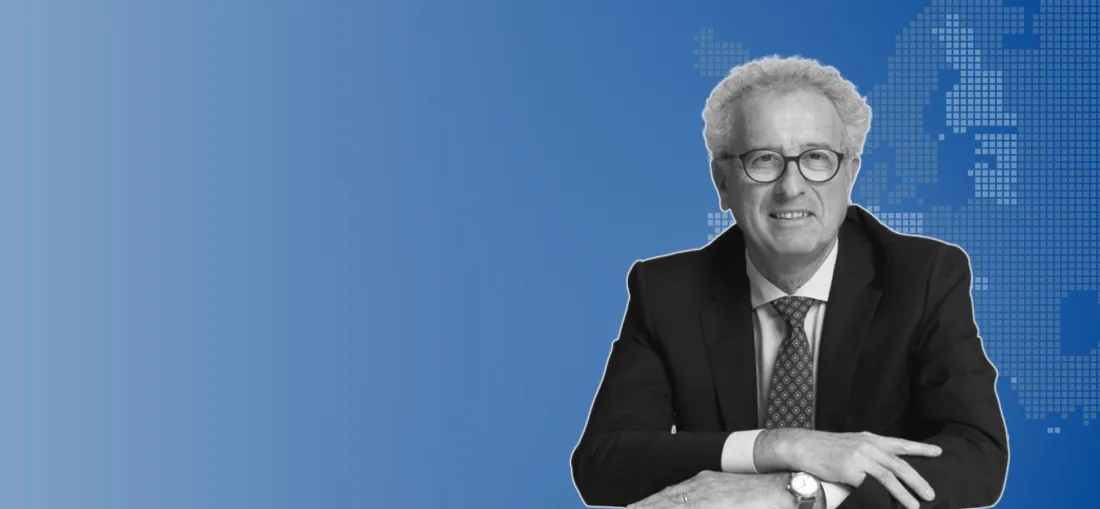Pierre Gramegna in interview with Jutarnji list

Interview with Pierre Gramegna, ESM Managing Director
Published in Jutarnji list (Croatia)
23 May 2023 (conducted: 19 May 2023)
Interviewer: Marina Klepo
Original language: English
Jutarnji list: Following the adoption of the euro, Croatia became a member of the European Stability Mechanism (ESM). Could you explain what it means to be the member of the eurozone’s permanent rescue fund, in terms of its entitlements and obligations?
Pierre Gramegna: Croatia joined the euro when the ESM had been in place for more than ten years. The protection it brings to the euro area can often be taken for granted. When the euro was launched the ESM did not exist, it was a missing part in the European and Monetary Union architecture.
Now, if a euro country has difficulties, the ESM can provide support to overcome these problems. The euro is stronger and more resilient with the ESM.
But it is not only useful when there is a crisis. It also has a preventive role. Its mere existence and that of its precautionary instruments preserve financial stability. Seen as a safety net by investors, it ensures that member countries have better access to capital markets.
From now on, Croatia will also benefit from this protection and from the solidarity member countries have demonstrated to each other since the creation of the ESM. As all other shareholders, Croatia contributes to the ESM ’s paid-in capital, with an initial contribution of €422 million. This capital serves as a security buffer for the bonds that the ESM sells to investors. It allows the ESM to access the markets at very low interest rates, which in turn benefits its members in case of need.
What is the lending capacity of the ESM and how has it changed over time? What was the amount of the support to the countries at the time of euro crises, Greece, Cyprus, Ireland, Portugal, and Spain?
The ESM’s maximum lending capacity is €500 billion. This firepower is available to all members, also to Croatia, in case of a crisis. Currently, around €417 billion is available – a sizeable protective safety buffer for euro area countries.
Three countries benefited from ESM support during the sovereign debt crisis: Spain, Cyprus, and Greece. The ESM’s temporary predecessor, the European Financial Stability Facility (EFSF), disbursed loans to Ireland, Portugal, and Greece. This stability support brought good results in terms of structural reforms and economic performance, leading to high growth rates. Some have been able to start repaying earlier than expected. In total, the ESM and the EFSF lent €295 billion to these countries.
While the ESM played an important role during the euro crisis a decade ago, its role has been subdued since then. During the pandemic, and the war in Ukraine, it seems that member states have not had an interest in the ESM’s bail-out programmes but, instead, used the SURE loan scheme and NextGenerationEU (NGEU) grants and loans. Has any country asked for the ESM’s support recently?
The ESM’s mission is to safeguard financial stability in the euro area. We work closely with other institutions. We all make sure, within our mandates, that the euro is safe.
When the pandemic broke out, the European Commission, the European Investment Bank, and the ESM provided support for workers, businesses, and euro area countries. These different initiatives had different objectives. But the common effort showed investors that Europe was united. NGEU adds to this solidarity by helping EU economies become more digital and greener.
By establishing a pandemic credit line for euro area countries, the ESM reacted quickly and innovatively, within its mandate. Its mere existence had a reassuring effect on markets.
Recently, no member country has requested financing from the ESM. But: When the fire brigade is not out, it’s usually good news.
To what extent have the EU’s emergency measures and new fiscal and monetary instruments during the pandemic affected the need to tap the ESM?
The ESM’s mandate has not changed. As the only permanent crisis resolution mechanism, the ESM continues to help member countries to prevent and overcome crises.
The European Commission’s NGEU was an advancement in EU integration and solidarity. It is temporary and serves a specific purpose: financing investment and structural reforms. One could even say that this fund was set up rapidly also because the ESM already existed. Its financing model is the same.
Experience tells us crises are unpredictable and, unfortunately, we are living in a more volatile world, where crises seem to occur repeatedly.
Having a safety net, embedded in the architecture of the European and Monetary Union, like the ESM, remains key for all euro countries.
Providing the ESM’s support implies specific, even harsh conditions negotiated between the European Commission and the member state concerned, supported by ECB, ESM and possibly IMF staff. Will it be like that in the future? The recipient country must agree on a reform programme, to tighten its budget, carry out structural economic reforms and, clean up its financial sector....
The role of the ESM is to help countries get on their feet again. We can offer financial support according to a wide range of instruments, with specific conditions linked to the type of problems countries face.
During the euro area crisis, ESM’s financial support helped address serious problems that required deeper, sometimes painful, reforms.
We also have “precautionary credit lines”. They support countries with sound policies, preventing small problems becoming unmanageable. Preventing crises is less costly than resolving them and those credit lines require much milder conditions that those attached to loans. During the pandemic, for instance, our crisis support had little conditions attached, tailored to cover healthcare costs.
When the revised ESM Treaty is ratified by all countries (and Croatia has already), the ESM will also be able to support the resolution of banks, providing additional resources to the Single Resolution Fund if they become insufficient.
Those are the most important features of the reform negotiated in 2019?
The new tasks include providing a backstop to the Single Resolution Fund. The reformed Treaty also aims to make the precautionary lending instruments easier and more predictable.
In the future, the ESM, together with the European Commission, would play a stronger role in case financial assistance is requested. While the Commission, in charge of the EU policy coordination, will guarantee that EU provisions are always respected, the ESM will provide reassurance that public resources are well spent, making good use of the money it provides. All this will help make the euro area more resilient to tackle crises.
What should one expect of the ESM in possible future crises?
I expect us to strengthen our preventive role. This is what Member States asked us to do under the revised ESM Treaty. The most important is that the ESM can support its members – the 20 euro area countries – and fulfil its mandate: ensure financial stability in the euro area. This is what we will continue to work for.
The reform has not been ratified yet. Why is it taking so long?
All euro countries agreed to the reform in 2020. One country has not finished ratification: Italy. In Italy, the last step for ratification will depend on a decision by the Parliament.
We must respect this process, and the timeline lies with them, though at the same time, recent financial turbulences in the USA and Switzerland showcase how important it is to have the backstop in place in Europe.
As the institution’s new Managing Director, what would you like to see achieved in your five-year term?
During my first Eurogroup meeting as Managing Director, I told finance ministers that I intend to lead the ESM with dedication, diligence, and dynamism. And this is what I am doing.
Right now, I am visiting all euro area capitals to discuss how the ESM can best perform its mandate going forward. The discussions have been rich and constructive. When this tour is over, we will communicate on the outcome.
Author

Contacts


